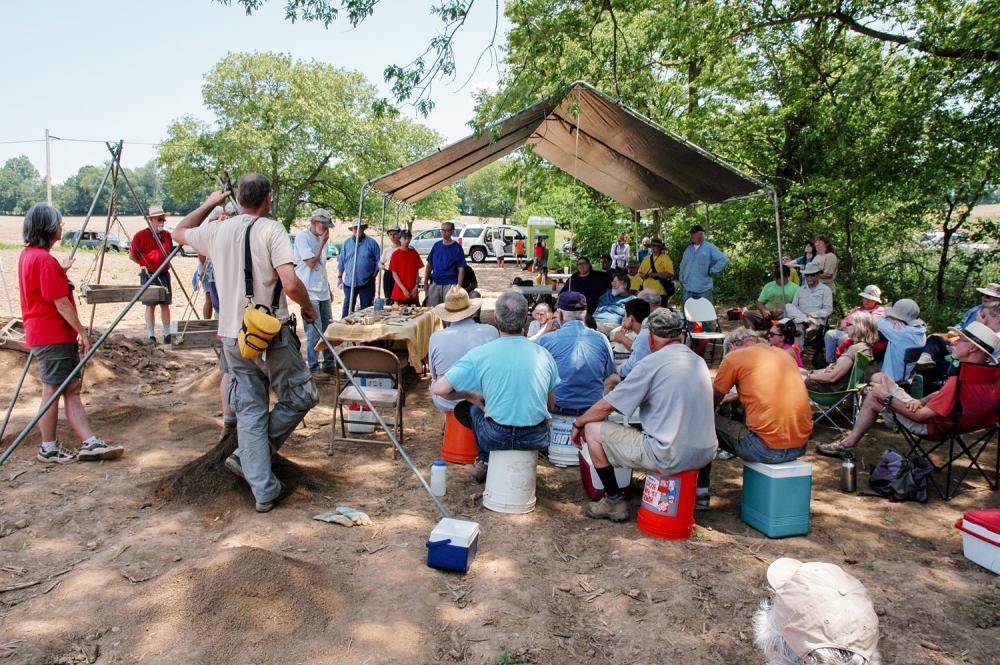By Carolynne Keenan, Contributing Writer
In the beginning weeks of summer, Recreation and Welfare (R&W) Club Frederick members experienced a once-in-a-lifetime activity: an archaeological dig in Walkersville, alongside Charlie Hall, Ph.D., Maryland state terrestrial archaeologist.
The dig took place over several days at the end of May and beginning of June. Dig participants could volunteer to work either half a day or the full day digging up the historical past at the site. Participants included R&W Club Frederick members as well as other volunteers from all over the state.
“It was a spectacular field session,” said Hall, adding that well over 150 volunteers contributed almost 500 work days, with as many as 64 volunteers on the site in one day.
Susie Culler, treasurer of the R&W Club Frederick, coordinated the dig for club members, which took place on her parents’ farm in Walkersville, off Biggs Ford Road.
Twenty-four volunteers represented R&W Club Frederick, and they joined participants who came from as far away as the Adirondack Mountains, in upstate New York.
Pre-dig Lecture Helped Volunteers Understand Site History
In early May, volunteers attended a lunchtime gathering at the Scientific Library, during which Hall explained the history of the archaeological dig site. The Walkersville site, he said, was once occupied by Native Americans known as the Woodland Indians or peoples of the Montgomery Complex (1000–1450 AD) and the Keyser Complex (1300–1500 AD).
Volunteers then applied knowledge learned from Hall’s talk at the dig site in the early summer, joining Hall and other professional archaeologists. They found many artifacts using shaker screens to sift through the soil. Some of the items included quartz sherds, potsherd (or pieces of pottery), fire-cracked rock, a portion of a tobacco pipe (thought to be from Ohio-based tribes), and elk bone fragments, as well as trade beads, which were often used as currency in exchange for goods or services. One of the beads was found entirely intact; the beads are likely products of Italy, Hall explained.
Participants and archaeologists made a huge discovery, one Hall had hoped to find in the location: remnants of palisades that outlined the boundaries of a village on the property.
“We were able to excavate twenty-five 2x2-meter units … including ‘the great pot lift’ and the discovery of a nearly complete deer antler rack on the last day,” Hall said.
The “great pot lift” refers to a pottery bowl that was found nearly intact during the dig. Hall and fellow archaeologists, with the help of volunteers, carefully excavated the bowl and sent it out for further analysis. Carbon dating techniques will be used to determine the age of the bowl.
R&W Club Frederick members also learned how to carefully wash and bag the artifacts for preservation. All the artifacts will be studied over the next few years in hopes of gaining additional knowledge around the Montgomery and Keyser Complex periods, Hall explained.
Archaeologists and other professionals provided lunchtime informational lectures throughout the dig to help participants understand the lifestyles of those who occupied this land many years ago.
“The journey was full of richness, not only in the experience of understanding peoples of past generations, but also the new friendships made during the experience,” Culler said.
Hall enjoyed the experience as well. “This field session at the Biggs Ford site was the best I have experienced (out of 14). From the weather to the crew, to the staff, to (and especially including) the site, this field session had it all,” he said.
For more information about the history of the Biggs Ford Road site, go to: http://www.jefpat.org/nehweb/assets/documents/findingaids/18FR14-%20Biggs%20Ford%20Finding%20Aid.htm.
For information on R&W Club Frederick, including how to join, visit: http://ncifrederick.cancer.gov/Staff/RecreationWelfare/.
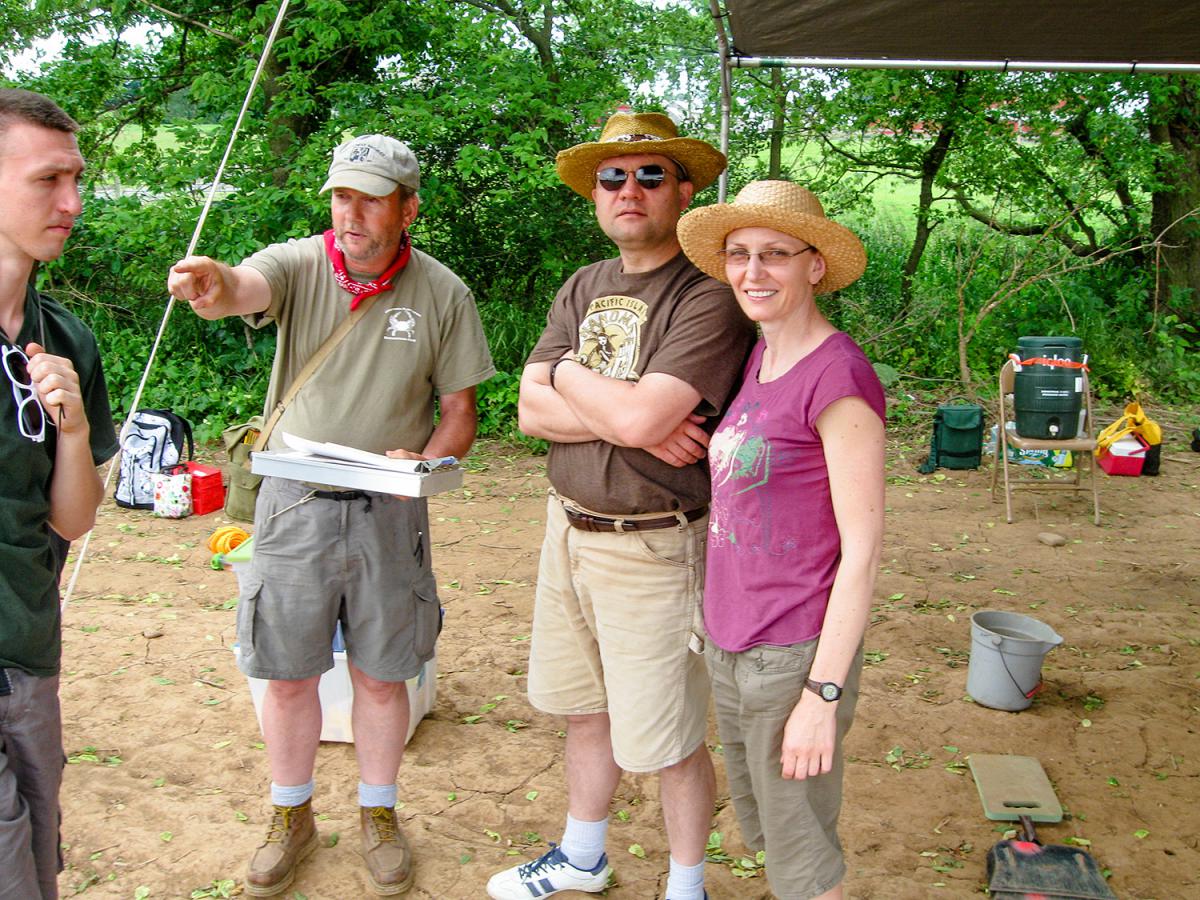
Olga Nikolaitchik, Ph.D., biologist, HIV Drug Resistance Program, right, with husband, Alex, center, and Charlie Hall, Ph.D., Maryland state terrestrial archaeologist. Photo courtesy of Olga Nikolaitchik.
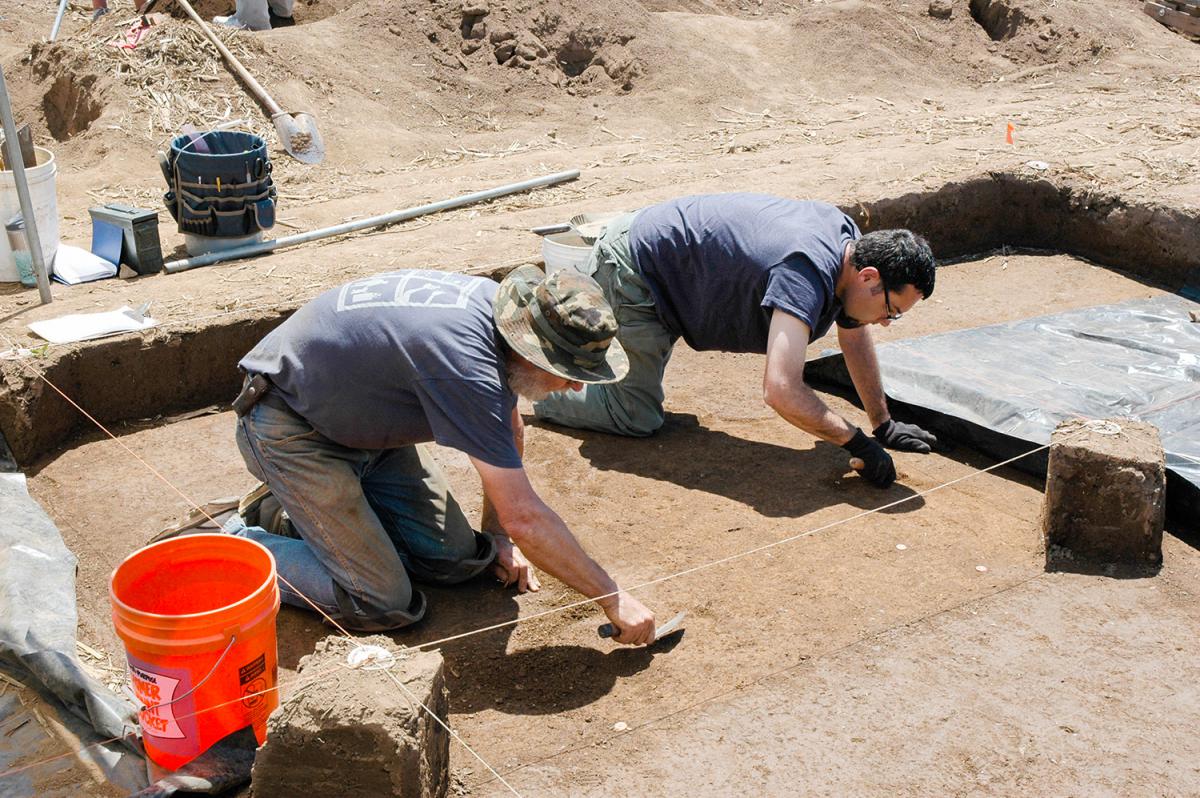
David Frederick, left, a volunteer, and Troy Nowak, an archaeologist, work on finding artifacts. Photo courtesy of Susie Culler.
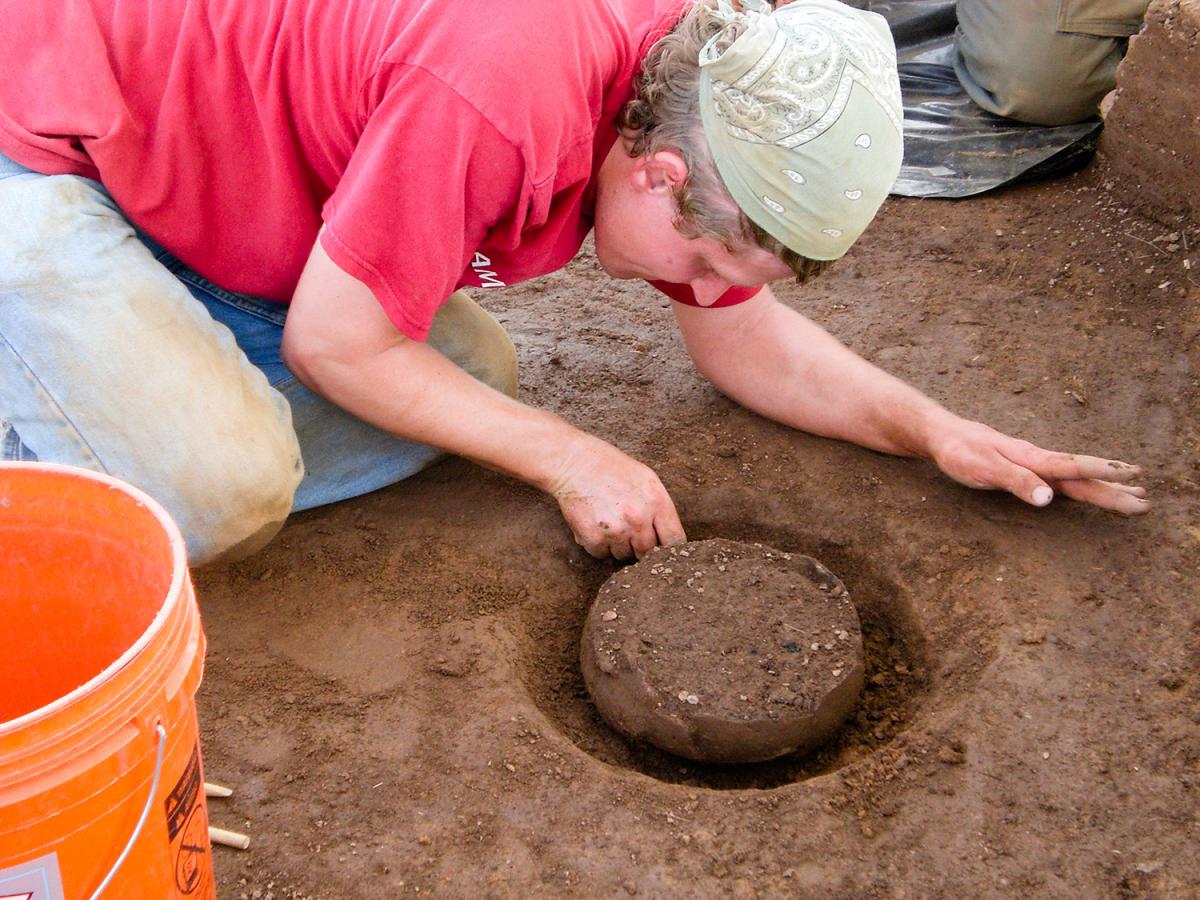
Matt McKnight, an archaeologist, excavates an almost-intact pot, in a find that volunteers and Charlie Hall, Ph.D., leader of the dig, referred to as “the great pot lift.” Photo courtesy of Charlie Hall.
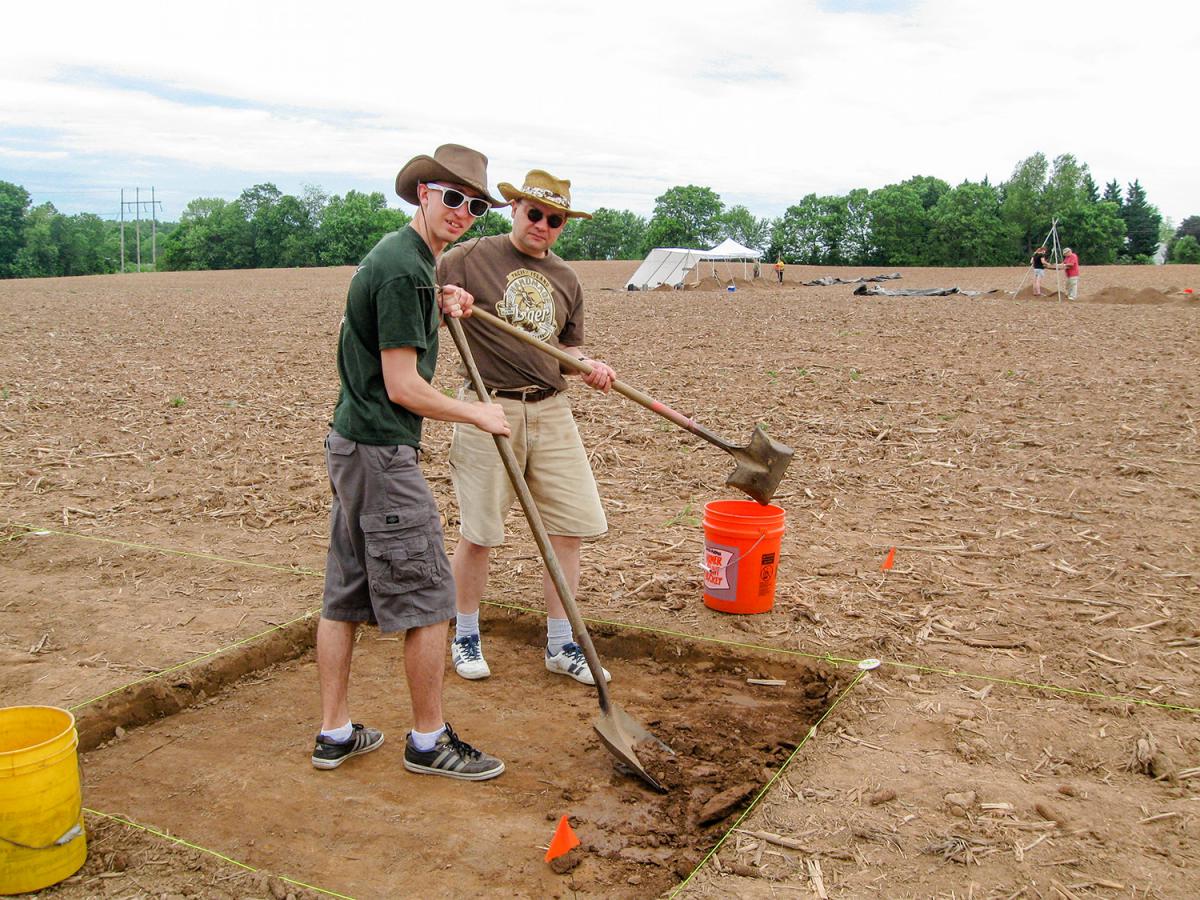
Theodore Nikolaitchik, a Werner H. Kirsten student intern at NCI at Frederick, left, and his father, Alex Nikolaitchik, dig for artifacts. Photo courtesy of Olga Nikolaitchik.
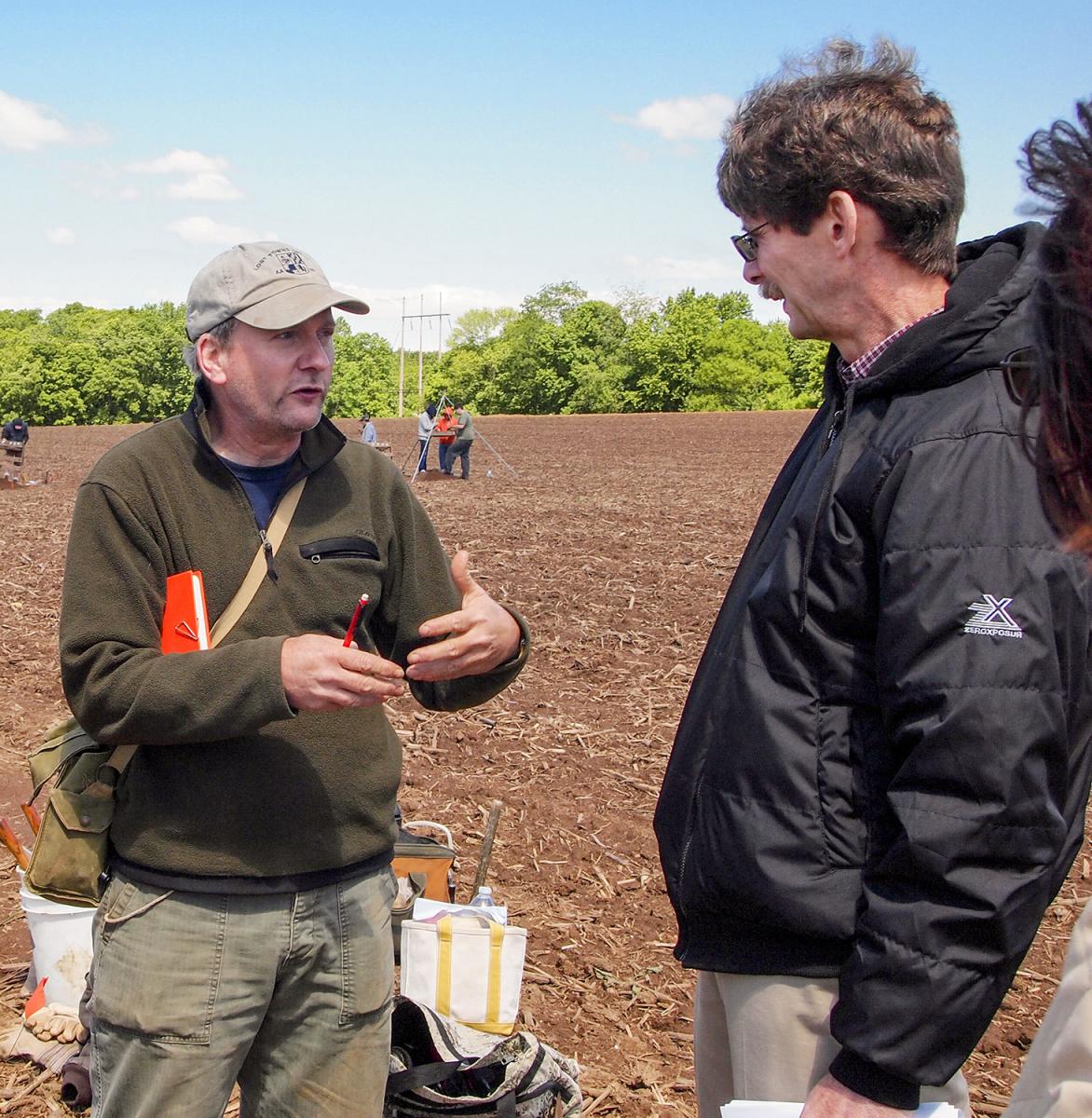
Charlie Hall, Ph.D., talks to Billy Crum during the dig. Crum is the son of the landowners on which the dig was conducted. Photo courtesy of Robin Winkler-Pickett.
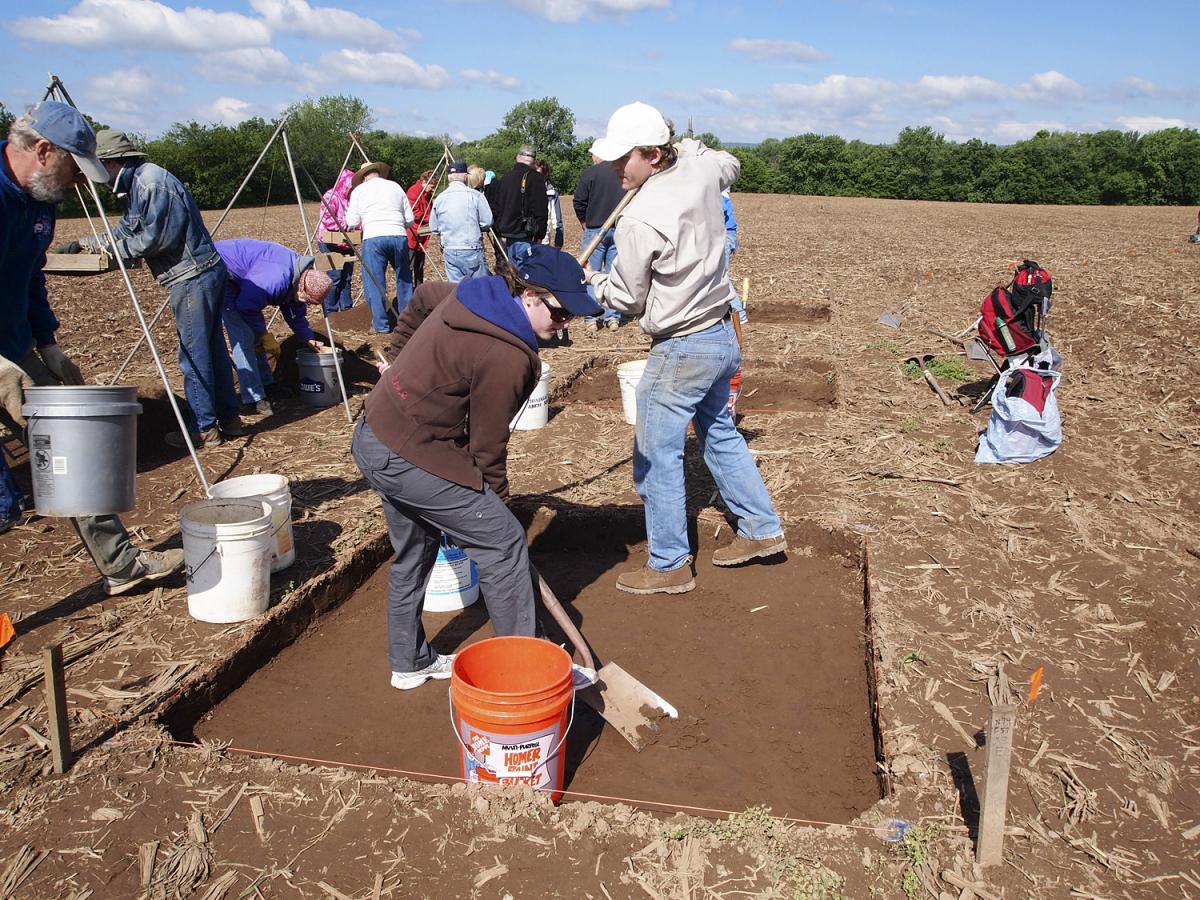
Volunteers till and prepare a section of land for excavation. Photo courtesy of Robin Winkler-Pickett.
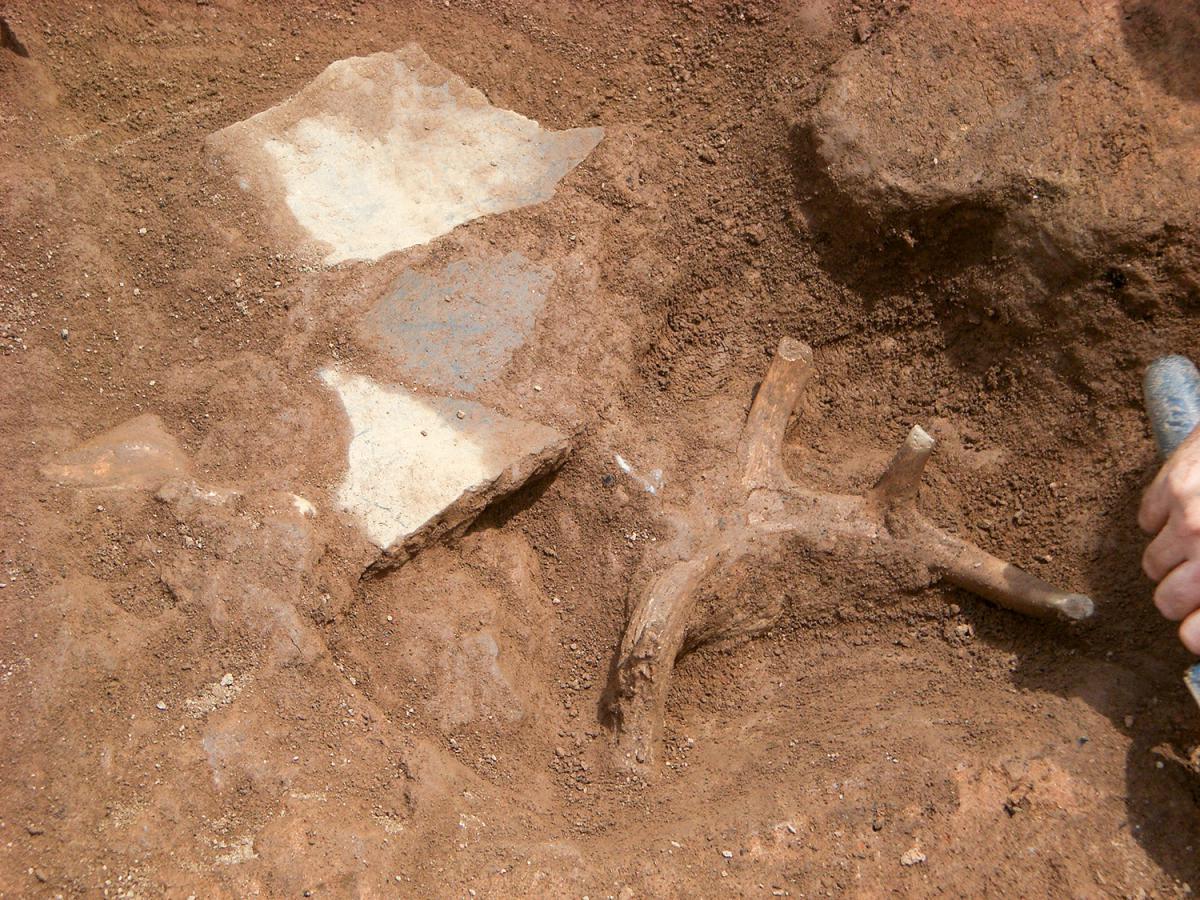
Some of the findings at the archaeological dig included an antler and sherds, or pieces of pottery. Photo courtesy of Charlie Hall.
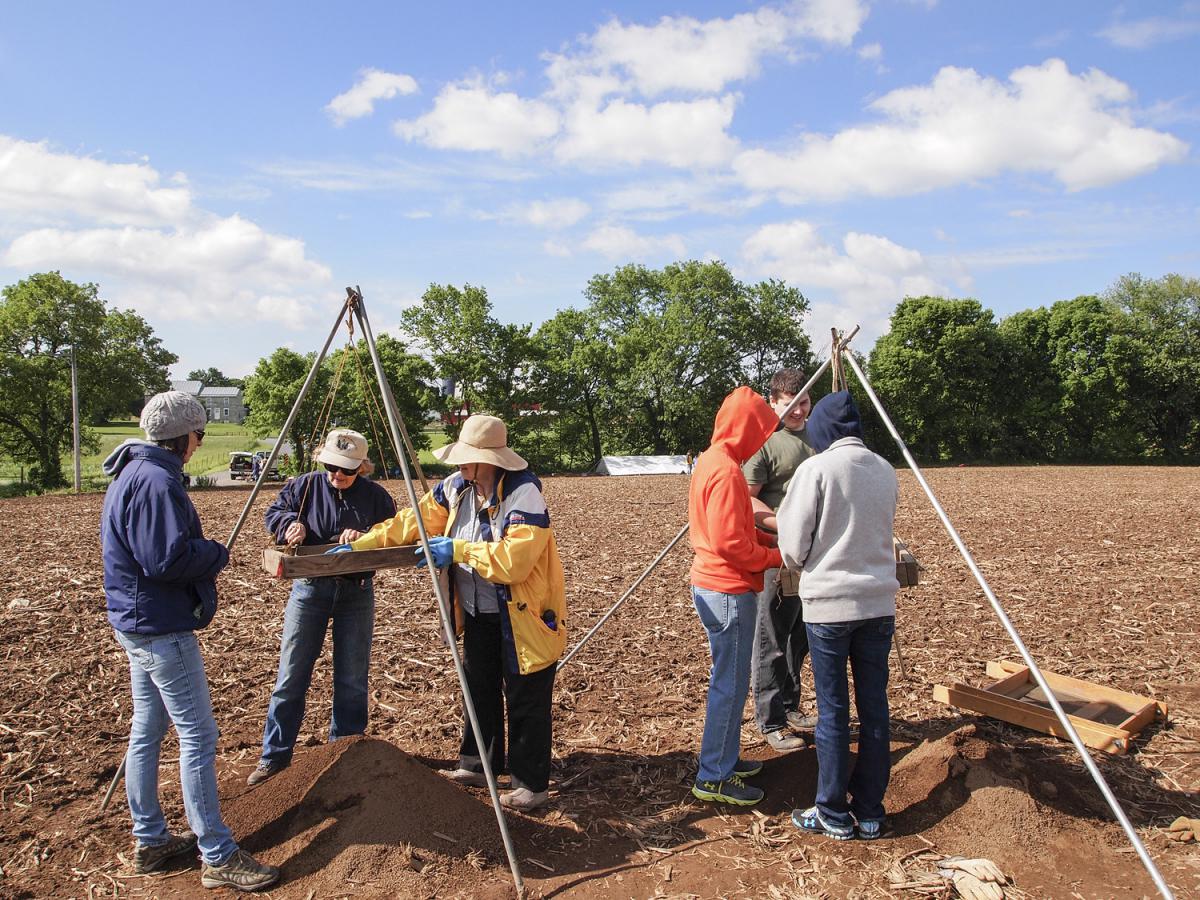
Volunteers sift soil in search of artifacts. Photo courtesy of Robin Winkler-Pickett.


